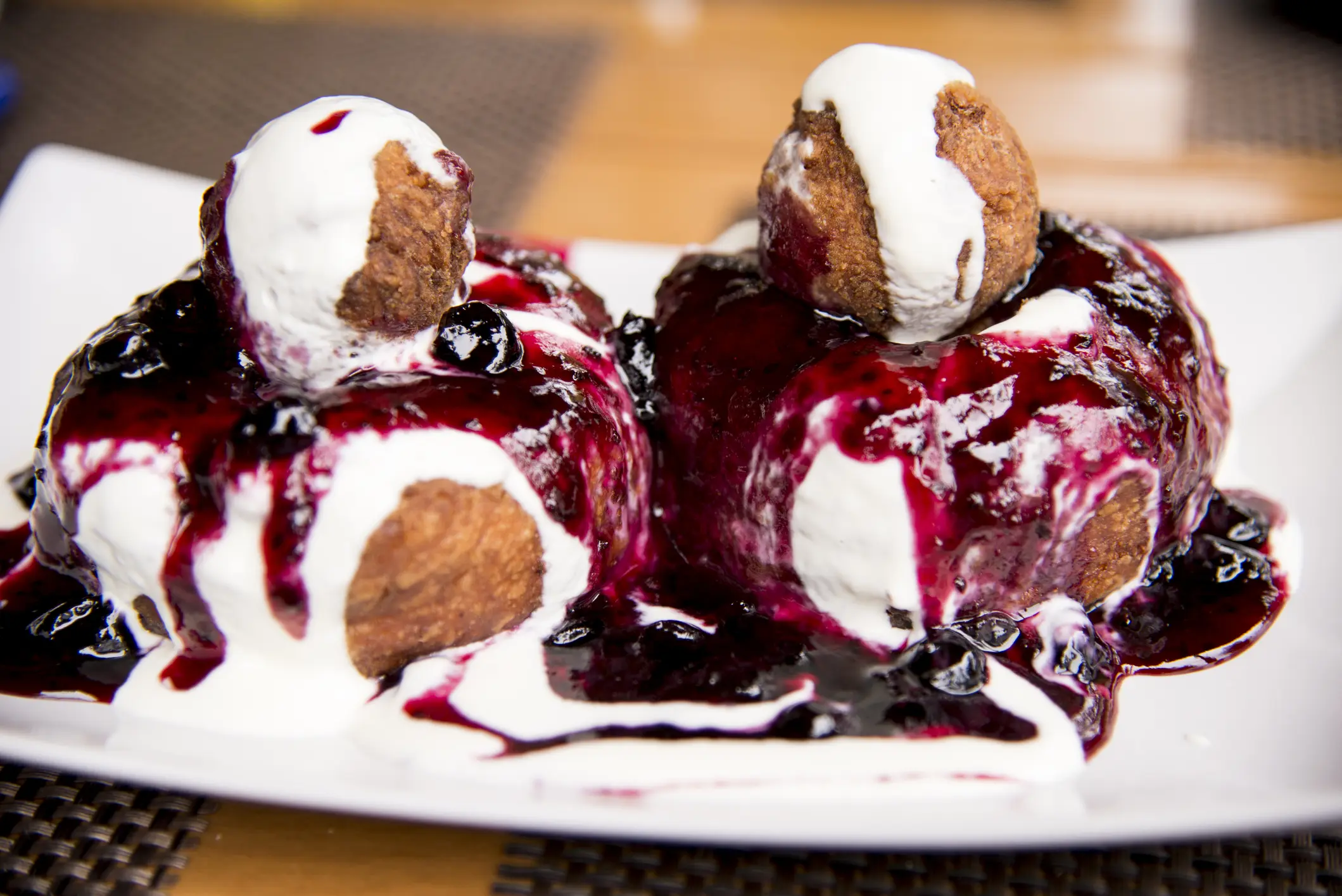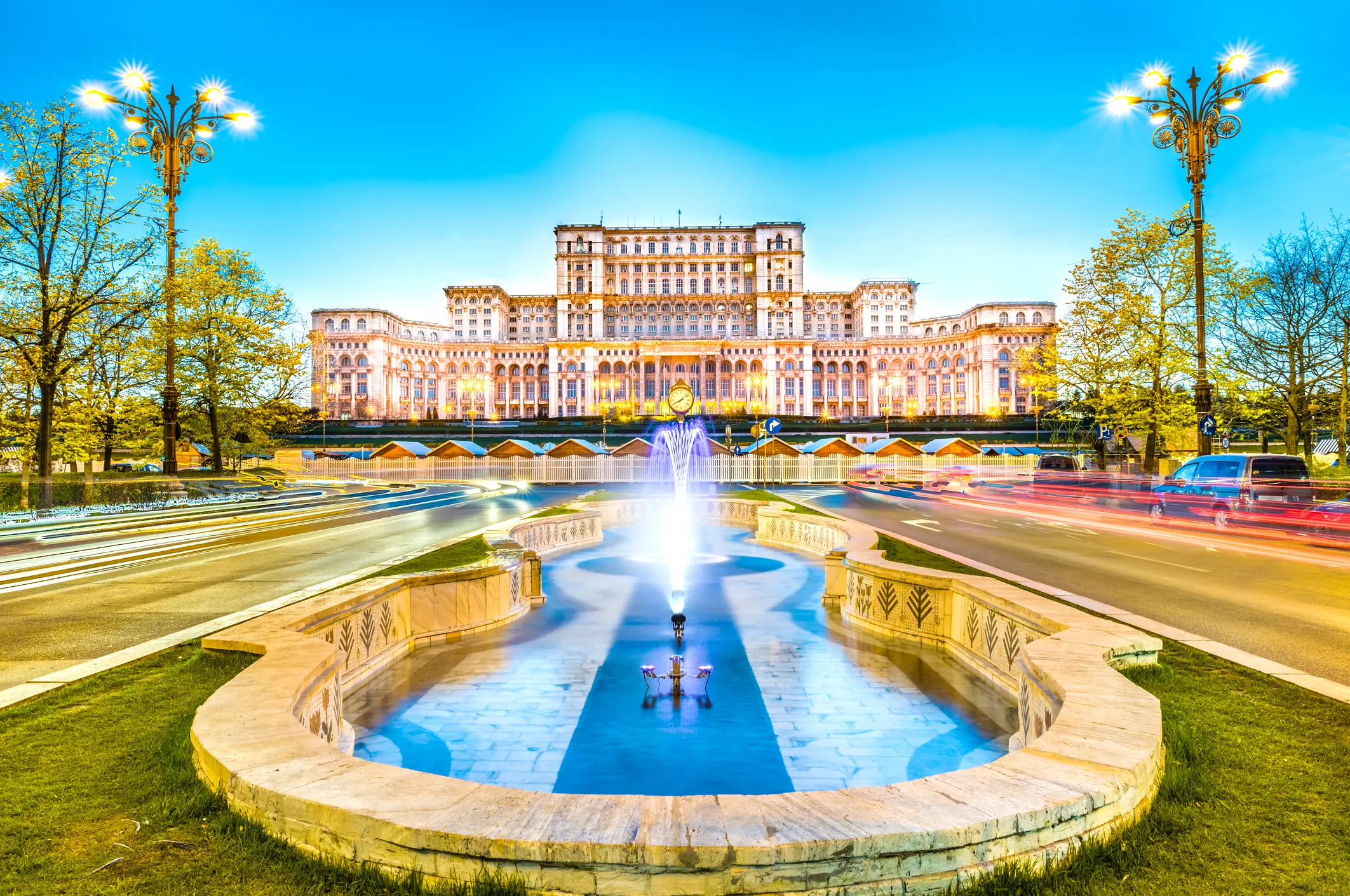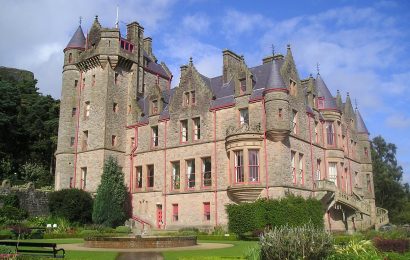Romania – my country – has become an increasingly popular destination for American travelers – whether they’re visiting family, exploring Eastern Europe, or simply curious about the mix of medieval towns, vibrant cities, mountains, beaches, and deep cultural traditions.
And while most Americans arrive with some general expectations – Dracula, castles, and maybe a bit of “Eastern bloc” imagery – the reality of Romania often delivers one surprise after another.
Some shocks are delightful, others are cultural, some are practical, and many are simply the result of differences between American daily life and European rhythms. The more Americans share their experiences, the more a picture emerges of what consistently stands out.
As someone who interacted with many Americans visiting Romania – some as tourists (some of them being travel bloggers) – some coming here during business trips (a friend of ours stayed almost 3 months), I decided to put together a list of things that shock Americans when visiting Romania 🙂
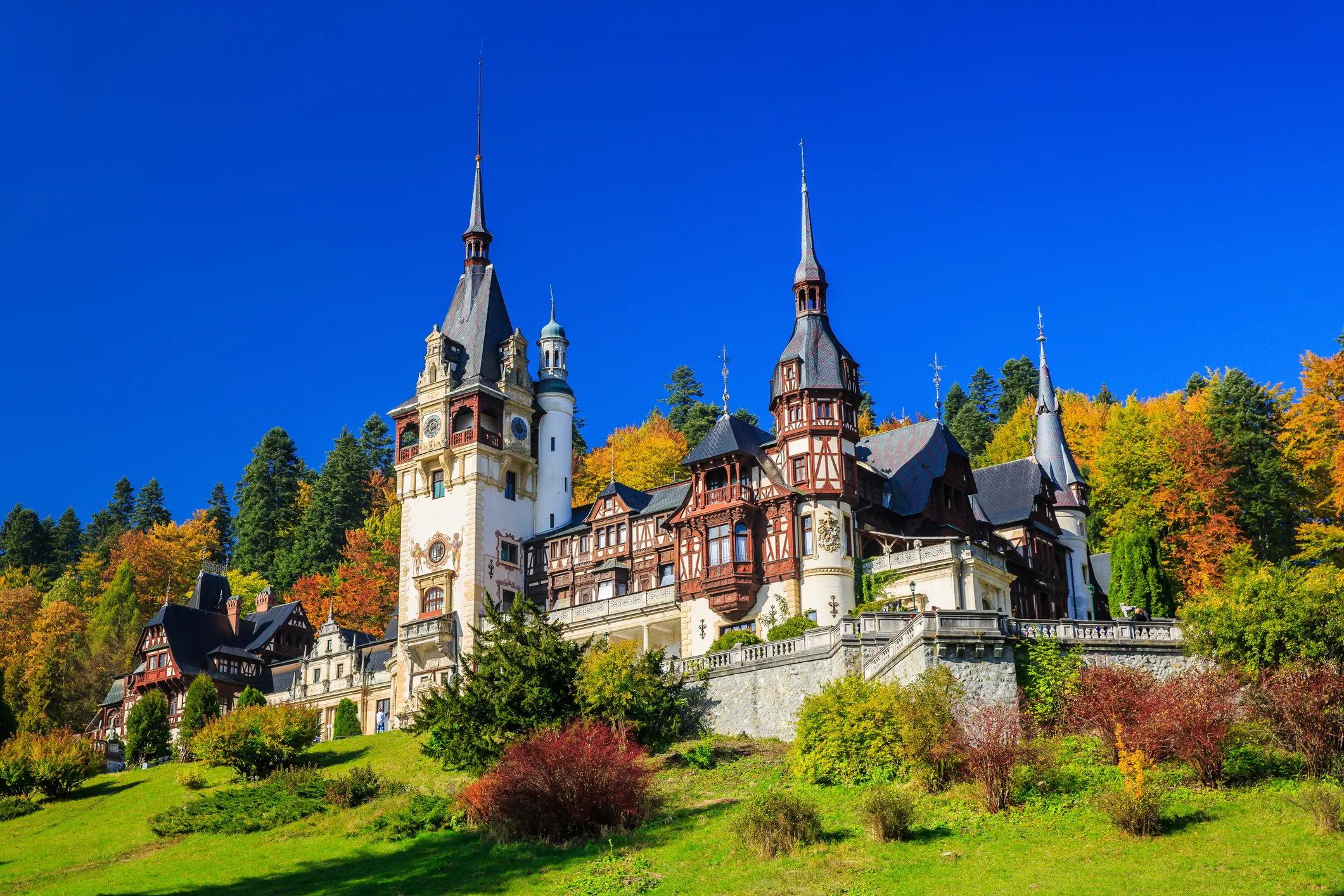
ID 46760909 ©Sorin Colac | Dreamstime.com
What Shocks Americans When Visiting Romania: A Complete Guide to the Biggest Surprises
1. Romania Feels Safer Than Most Americans Expect
One of the first surprises Americans mention is how safe Romania feels. Travelers talk about being comfortable walking late at night, seeing children out in parks at 10–11 p.m., and noticing the relaxed atmosphere in many neighborhoods.
Of course, Romania is not crime-free. No country is. But compared to many large U.S. cities, the level of violent crime is relatively low. The sense of public-space safety – especially in pedestrian areas, old town squares, and residential neighborhoods – often impresses visitors. Many describe Romania as “calm,” “walkable,” and “less tense” than they anticipated.
The contrast is especially noticeable for Americans used to car-centric cities, limited public spaces, or areas where walking feels risky after dark. In Romanian cities, people of all ages stroll comfortably, take late-night walks for ice cream, or enjoy public squares and parks long after sunset.
2. Romania Is More Modern Than Visitors Expect
Many Americans arrive imagining an older, slower, post-communist world – but they quickly discover that Romania blends old and new in surprising ways.
Historic buildings sit beside glass office towers. Medieval streets open into ultra-modern shopping malls. Mom-and-pop stores coexist with tech startups, coworking hubs, and bustling coffee shops.
High-speed internet is everywhere – even in rural areas – and Romania consistently ranks among countries with fast, affordable broadband.
This mix of past and present is one of Romania’s defining features. You’ll see 1970s communist-era apartment blocks next to modern residential complexes, centuries-old churches steps away from sleek restaurants, and cobblestone centers surrounded by contemporary districts.
For Americans expecting something less developed, the modern side of Romania is a very welcome shock.
3. The Hospitality: Warm, Generous, and Deeply Rooted
It’s hard to talk about Romania without mentioning hospitality. Americans consistently say this is one of the most memorable cultural shocks – usually in the best way possible.
Here, I will add that this is even more shocking when visiting smaller cities or villages.
Romanian hospitality often means:
- huge meals, even when you insist you’re not hungry
- homegrown vegetables, homemade wine, and elaborate home cooking
- invitations to family gatherings
- people going out of their way to help you
- treating guests like royalty
Once you’re welcomed by a Romanian family, you’re in for life. For many Americans, this level of generosity feels almost overwhelming at first.
4. A Surprisingly Affordable Country

Although costs are rising (like everywhere), many Americans are surprised by how far their money goes in Romania compared to the U.S.
All the Americans we interacted with often commented on the affordability of:
- restaurants
- groceries
- bakeries and pastries
- museum tickets
- public transportation
- intercity trains
- fresh produce in markets
This doesn’t mean Romania is “cheap” for locals – average salaries are lower – but from a U.S. travel budget perspective, Romania offers excellent value.
Many Americans describe feeling like they’re suddenly able to enjoy small luxuries more often: grabbing a coffee and cake without thinking twice, ordering extra appetizers, visiting more attractions, or staying in beautiful boutique hotels.
5. Romania Loves Sweets – And Americans Notice
This is one of the funniest and most unanimous reactions:
Americans are shocked by how many cakes, pastries, and sweets Romania has.
Every American visitor we know shares the same reaction:
- “I can’t believe how many cakes there are!”
- “I tried a different dessert every day!”
- “There are bakeries everywhere!”
Romania has a deeply rooted dessert culture, both at home and in shops. You’ll find:
- cozonac
- papanasi
- savarină
- amandină
- French-inspired cakes
- MANY types of cakes – including a funeral cake (everyone loves!)
- cream-filled pastries
- fruit tarts
- multilayered chocolate creations
- bakery chains with endless choices
ID 122359403 ©Adfoto | Dreamstime.com
Even small towns have at least one cofetărie (cake shop). And when visiting family? Expect dessert even when you’re full.
For Americans, especially those from regions with fewer bakeries or more standardized chain desserts, the variety and abundance are a delightful shock.
6. The Green Arrow for Turning Right (Unique Traffic Lights)
ID 201195714 ©Mattin Ott | Dreamstime.com
This is a practical surprise that catches many American drivers off guard:
Romania often uses a separate green arrow light for turning right, instead of relying on the U.S. system of turning right on red (with an intermittent yellow/orange signal used for caution).
Ok, as a note, this is not a Romanian thing, it is a European characteristic of green lights – but for Americans visiting first Romania (in Europe) it is shocking as I saw first hand.
In Romania:
- A green arrow explicitly allows right turns. If there is no green arrow, you cannot turn right (except on green light).
- You cannot turn right on a regular red light unless the green arrow is illuminated.
- Waiting patterns and flow feel different.
Americans find this unusual at first because they’re used to the “right on red” default, which doesn’t exist in most European countries.
This difference requires a bit of adjustment, but once understood, it becomes intuitive and clear.
7. Smaller Streets, Tighter Parking Spaces, and “My Car Wouldn’t Fit Here!” Moments
One of the biggest practical shocks for Americans – especially those used to roomy suburban roads – is how narrow many Romanian streets are.
Many of our acquaintances noticed this:)
You’ll encounter:
- slim one-way streets in old towns
- tight residential roads with cars parked on both sides
- narrow driveways
- small underground parking spaces
- compact parking lots at malls or supermarkets
- winding village roads
American friends often comment that their U.S.–sized vehicles (large SUVs, trucks, long sedans) would technically fit, but driving them here would be stressful.
Parking in particular feels tricky. U.S.-style wide spaces and huge lots are rare. Romanian drivers learn to maneuver in tight corners, squeeze into compact spots, and navigate with precision.
This is why Romania has so many compact cars: they simply fit better.
For Americans used to large vehicles and ample space, this is a major surprise – and one that becomes a talking point within the first few days of driving.
8. Romania’s Wedding Culture: All-Night Parties, Traditions, and Endless Food
American travelers who attend Romanian weddings never forget the experience.
Weddings in Romania are:
- Long: often lasting until 4 or 6 a.m.
- Lavish: multi-course meals, dozens of dishes, endless drinks
- Traditional: from dances to rituals
- Energetic: lots of music, from folk to modern
Romanians take weddings seriously, and guests are treated to an unforgettable celebration.
Americans frequently describe the event as “a cultural marathon,” “the longest party of my life,” or “the best wedding I’ve ever been to.”
For those accustomed to U.S. weddings that typically last 4–6 hours, Romanian weddings are a very joyful shock.
9. Romanian Traditions: From Church Customs to Unique Seasonal Rituals

ID 214404661 ©Sorin Colac | Dreamstime.com
Romania has a strong spiritual and cultural heritage, and Americans often find it both surprising and fascinating.
Some common observations include:
- People crossing themselves when passing a church.
- A high number of churches – even in small villages.
- Major holidays are celebrated with deep-rooted customs.
Folk rituals that are completely new to American visitors.
Visitors often describe these moments as windows into a culture that has preserved traditions across centuries.
10. People Stare – but It’s Usually Just Curiosity
One of the most commonly mentioned social shocks is people staring.
Romanians sometimes look openly and directly at strangers in public places – not out of rudeness, but often out of curiosity or observation. It’s normal in Romanian culture to look around, notice people, and not immediately avert your eyes.
Americans, however, come from a culture where staring is often interpreted as intrusive or aggressive. The contrast leads to some awkward early moments until visitors understand that in Romania, it’s just part of normal social behavior.
11. Direct Communication and Unsolicited Advice
Romanian communication can feel more direct compared to American norms. Many Americans comment on:
- straightforward opinions
- unsolicited advice
- comments from strangers (especially about children, clothing, or weather)
- a pragmatic, sometimes blunt style
This isn’t meant to offend – Romanians often see it as helping, caring, or stating obvious truths.
But for Americans from cultures emphasizing personal space and verbal softness, this can feel unexpected.
Over time, many come to appreciate the honesty and clarity.
12. Less Casual Dress in Certain Situations
Another subtle shock: Romanians tend to dress more formally in urban environments.
While casual clothing is absolutely common, the American version of “casual” – such as wearing sweatpants or gym clothes to nicer restaurants – stands out much more in Romania.
Visitors sometimes notice:
- more tailored clothing
- well-kept shoes
- coordinated outfits
- higher expectations for appearance in restaurants and events
Americans often realize they packed too casually for social outings.
13. The Pace of Life: Late Dinners, Late Nights
Romanian cities come alive in the evenings. Families take walks, teenagers hang out in squares, cafés stay open, and people dine late.
Restaurants often get busiest at 8–10 p.m., which shocks Americans who eat dinner earlier.
Summers are especially vibrant: terraces packed with people, children playing late at night, and a relaxed approach to bedtime.
This nighttime culture is one of Romania’s most charming features.
14. Apartment Living and City Layouts
Americans used to large houses and spacious suburbs are often surprised by Romania’s residential patterns.
Romanian cities are:
- more vertical
- more walkable
- built around public transportation
- filled with apartment blocks
Even middle-class families often live in apartments rather than houses. This is not seen as a compromise; it’s a very common lifestyle.
The contrast with American suburban living leads to many “aha!” moments for visitors.
15. Cash Still Matters (Though Cards Are Common)
Romania is extremely card-friendly, especially in cities, but Americans still notice that cash has a role.
Small shops, local markets, or rural businesses may prefer cash. Some parking machines, street stalls, or taxis also expect cash payments.
Americans who arrive assuming everything is tap-to-pay sometimes need a day or two to adjust.
16. Public Transportation That Actually Works
Romania’s transportation varies by city, but the presence of:
- trams
- buses
- trolleybuses
- metro systems
- trains
feels refreshing for many U.S. travelers from cities with limited public transport.
Bucharest’s metro, Cluj’s buses, Brașov’s trolleybuses, and the extensive intercity train network impress visitors who are used to driving everywhere back home.
And, I might add, Americans find taxis/Uber/Bolt cheap here.
17. The Difference in Turn Signals: Yellow vs. Red
Another little detail that Americans always notice:
European cars have yellow turn signals, whereas many U.S. cars use red signals for both brake and turn functions.
When Americans rent cars or observe traffic in Romania, the visibility and clarity of yellow signals stand out immediately. Some even comment that it’s easier to distinguish intentions in traffic this way.
This detail becomes surprisingly memorable.
18. The Sheer Diversity of Landscapes in a Small Country
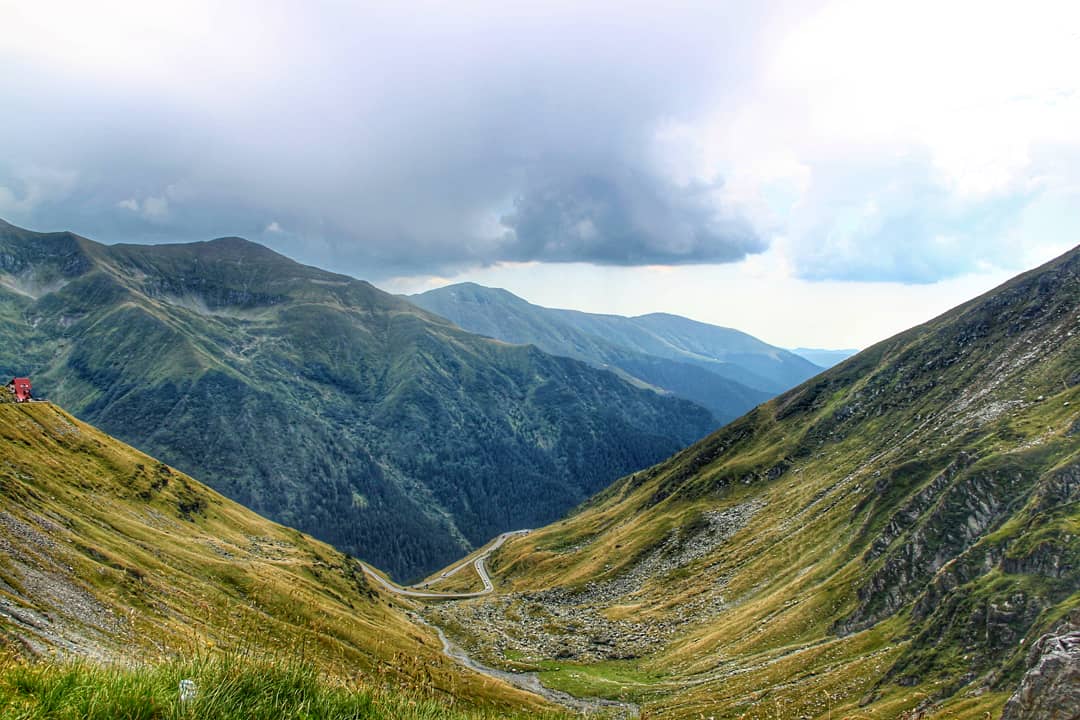
One of the things I love about my country is that we have such a huge variety of landscapes.
Romania may not be huge, but it packs in:
- mountains
- beaches
- wetlands
- medieval towns
- rolling hills
- painted monasteries
- fortified churches
- modern cities
For Americans coming from a much larger country, the idea that they can go from ski slopes to the seaside in a few hours feels almost magical. Many describe Romania as “compact but incredibly diverse.”
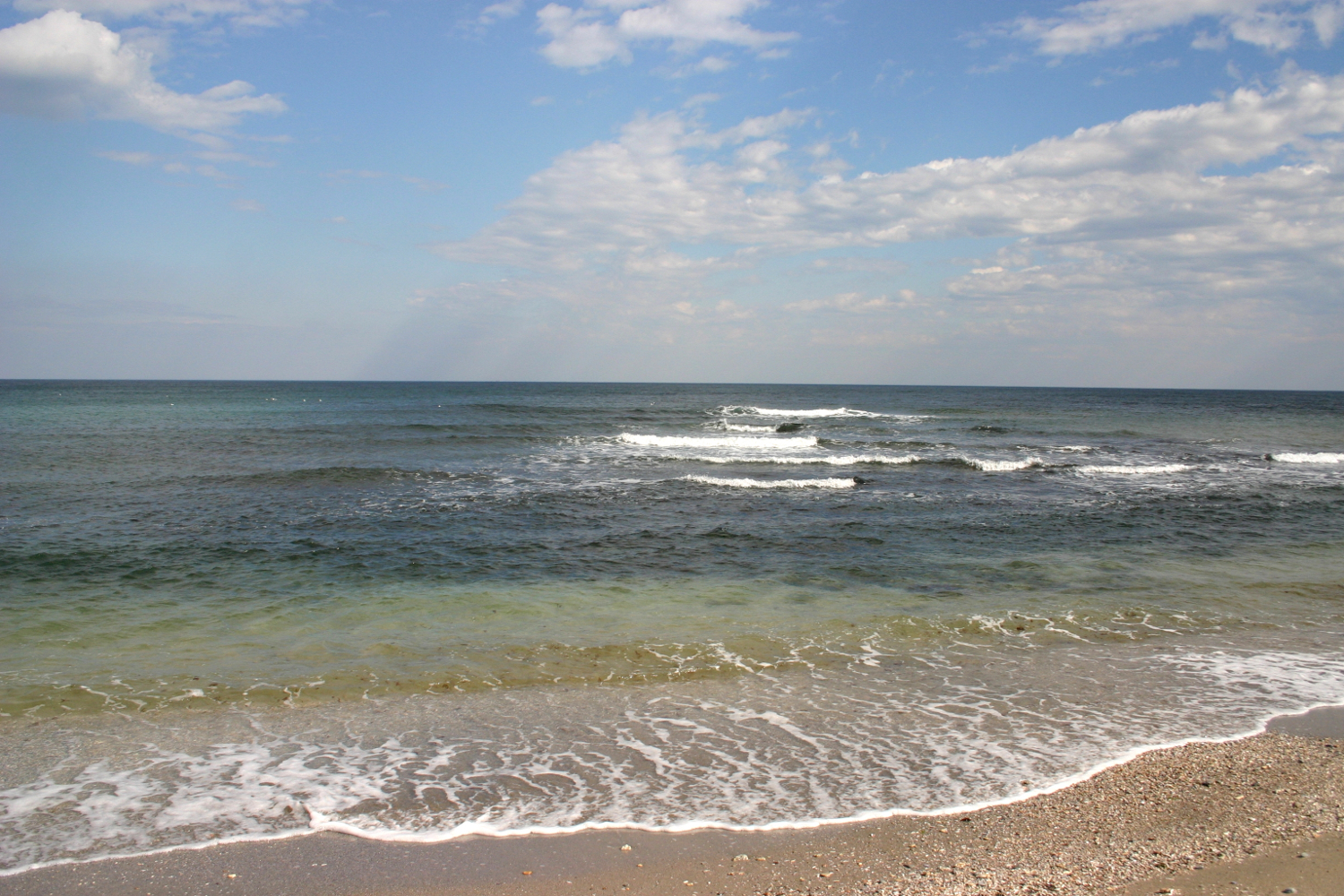
19. Romania’s Stunning Towns Look Straight Out of a Storybook
One thing Americans do not expect when visiting Romania is just how beautiful and well-preserved many of its towns are. And this becomes obvious from the very first visit to places like Brașov, Sibiu, Sighișoara, or Oradea.
For many U.S. visitors, the reaction is instant:
“I had no idea Romania looked like THIS.”
Romania’s historic towns have a distinctly European charm that feels almost cinematic:
- medieval squares lined with colorful buildings
- clock towers rising above red-tiled roofs
- narrow pedestrian streets leading to cozy cafés
- mountain backdrops that look straight out of a postcard
- baroque, gothic, and saxon architecture preserved beautifully
When we showed American friends the old town of Brașov – especially the view from above, with its red rooftops and perfect central square – they were stunned. It felt to them like discovering a hidden European gem that is somehow not overcrowded or over-marketed.
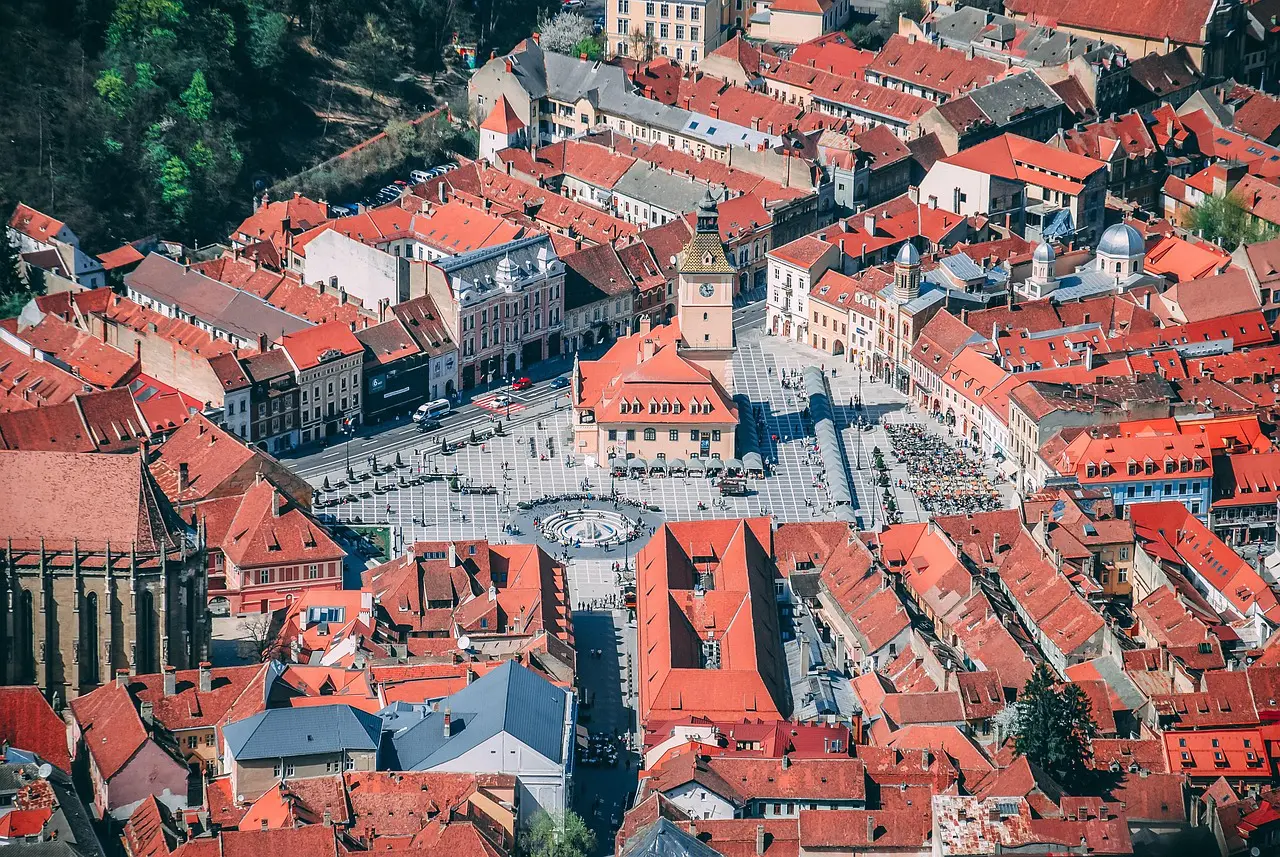
Places like:
- Brașov, with its Council Square and Tampa mountain
- Sibiu, with its pastel houses and “eyes” windows
- Sighișoara, a UNESCO medieval citadel
- Oradea, with its Art Nouveau palaces
- Cluj-Napoca, a vibrant mix of history and youth culture
…all deliver a level of architectural charm that many Americans compare to Austria or Germany – but at a fraction of the cost, and without the overwhelming crowds.
For many American travelers, this discovery becomes one of their favorite surprises of the entire trip.
20. Romania’s Castles Look Straight Out of Fantasy Films
Another thing that shocks American visitors is how incredibly cinematic Romania’s castles are. Many arrive expecting a few medieval ruins – but instead, they discover some of the most breathtaking and dramatic castles in Europe.
Peleș Castle (the first photo from this article), with its fairy-tale architecture and lush mountain backdrop, feels like something from a Disney movie – yet it’s real, impeccably preserved, and open for tours.
The interiors look like a royal time capsule: carved wood, stained glass, hidden staircases, and decorative details that leave American visitors genuinely stunned. Most say they’ve never seen anything quite like it.

Corvin Castle, on the other hand, delivers full medieval drama. With its drawbridge, towers, gothic arches, and fortress-like stone walls, it looks straight out of a fantasy film or a historical epic.
Many Americans compare it to sets from Game of Thrones or Lord of the Rings – except this one is completely real. Visitors consistently call it one of the most impressive castles they’ve ever seen in Europe.
Bran Castle, famous worldwide thanks to its Dracula connection, adds another layer of fascination. While it isn’t actually Dracula’s castle, its dramatic silhouette, cliffside position, narrow passageways, and medieval interiors give it an irresistible aura.
Americans often come for the legend – but leave talking about the views, the history, and the atmosphere of the place. The mix of myth and reality surprises many of them, making Bran an unforgettable stop.
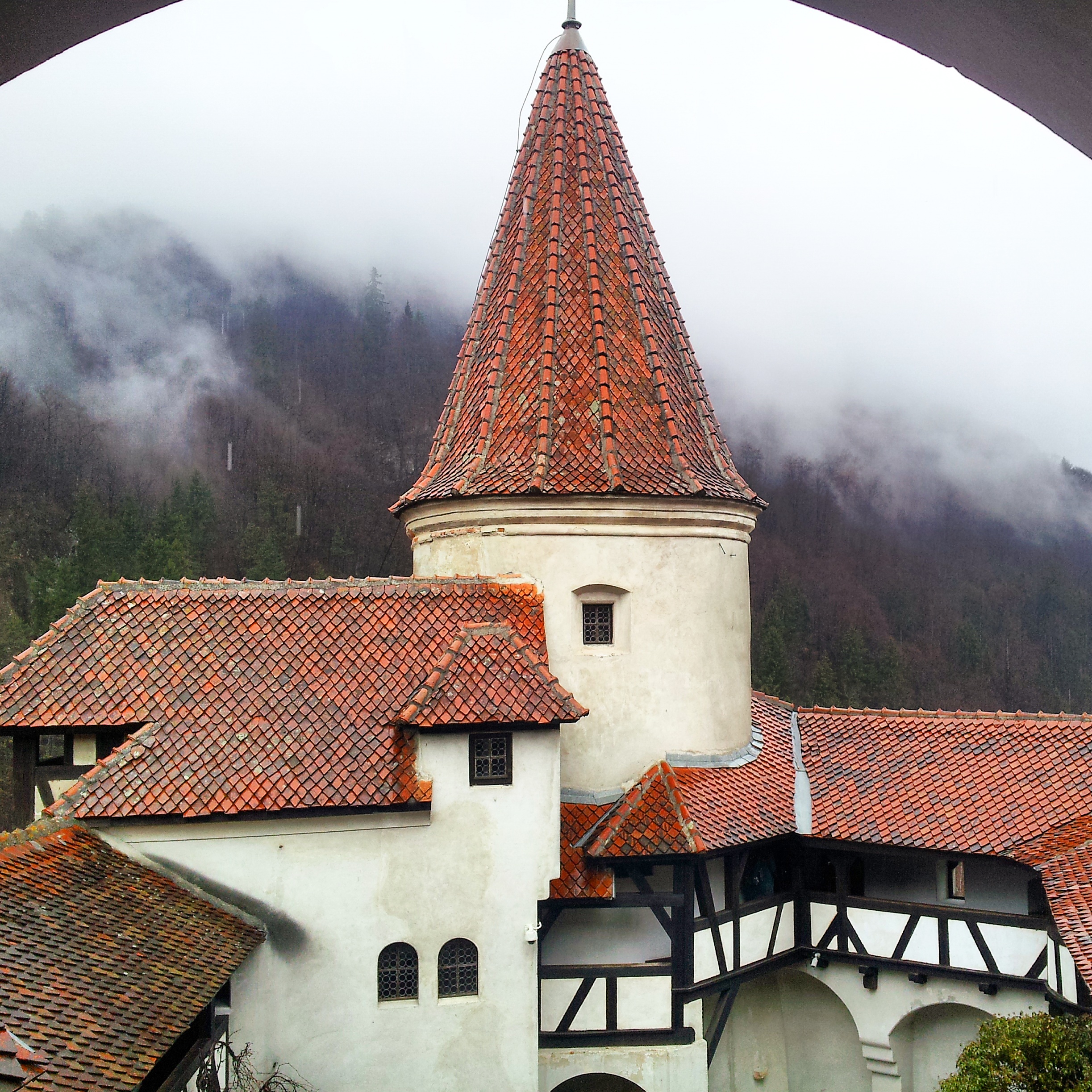
Most Americans don’t realize until they arrive that Romania has world-class castles — each with a completely different vibe. From elegant royal residences to Gothic fortresses and legendary strongholds, Romania’s castles feel almost unreal, and they become one of the strongest “wow” moments of any visit.
21. A Strong Coffee Culture
Coffee is a big part of Romanian daily life. Americans notice:
- handcrafted drinks at every corner
- quality espresso even in small cafés
- long, social coffee breaks
- specialty coffee roasters
- beautifully designed cafés
This café culture feels European in the best possible way.
22. The People’s House: The Colossal Romanian Parliament That Shocks Every American Visitor
ID 123246257 ©Dorinmarius | Dreamstime.com
Every American who visits Bucharest eventually ends up standing in front of the Palace of the Parliament – and almost every single one has the same reaction:
“WHAT? How is this building so big?”
Yes, I know, many would have included this as number one on this list – but I left it for the end of the article.
The People’s House (Casa Poporului) is consistently one of the biggest shock moments for Americans in Romania, for several reasons:
It’s the second-largest administrative building in the world
Only the Pentagon is bigger – and the difference is surprisingly small.
When Americans hear this, they’re stunned. When they see it, they’re speechless.
Most visitors cannot grasp its scale until they walk around it (which can take 30–40 minutes), or see it from above in drone photos.
The sheer mass of marble, the endless rows of identical windows, the width of the facade, and the height of the structure all feel surreal, almost exaggerated – like something from a dystopian movie set.
We actually took one of the Americans visiting Bucharest to a guided tour inside thias building and he was truly impressed.
It’s also the heaviest building on the planet
Americans love this fact.
The palace is so huge and so packed with stone materials that it’s considered the heaviest building in the world.
The contrast with Romania’s size shocks people
A massive structure like this is expected in the capital of the U.S., China, or Russia – but Romania?
Most Americans simply never imagined something so monumental would stand in Bucharest. Its existence alone reshapes many visitors’ mental image of the country.
The mix of grandeur and history adds to the shock
This building isn’t just large – it’s symbolic.
Built during the communist era under Ceaușescu, it represents both ambition and tragedy, extravagance and sacrifice. The guided tours reveal:
- kilometers of corridorshundre
- ds of enormous rooms
- vast marble halls
- opulent staircases
- gold accents
- chandeliers weighing tons
Americans often compare it to Washington D.C. architecture – and realize nothing back home comes close to this level of monumental excess.
Most Americans admit they didn’t know Romania had anything like this
This is why it’s one of the most shocking places in the country.
23. And Right Next to It: Romania Just Opened the Largest Orthodox Cathedral in the World
If the Parliament building weren’t enough of a surprise, Americans get hit with a second shock when they learn what sits next door:
the newly built National Cathedral – also known as the People’s Salvation Cathedral.
It is the largest Orthodox cathedral in the world
This fact alone makes many American visitors stop and stare.
Romania – a relatively small European country – now hosts the biggest Orthodox religious structure on the planet.
Its size and height are astonishing
The cathedral’s main dome and towers dominate the skyline. When standing near the Parliament, Americans often look from one massive structure to the other in disbelief:
- the world’s heaviest building
- next to the world’s largest Orthodox cathedral
In one place.
In the capital of a country they assumed was “small.”
It completely overturns expectations.
Recently opened to the public
The cathedral has been under construction for years, and Americans are surprised to learn that:
- it has recently opened its main areas to visitors
- the consecration and public access are modern events
- finishing touches are ongoing, but services and visits already happen
This blends Romania’s ancient Orthodox traditions with its modern identity – a combination that fascinates American travelers.
The interior scale is breathtaking
Visitors who enter are struck by:
- the immense height of the central dome
- the modern fresco style
- the feeling of standing in a space built to inspire awe
It feels different from most Orthodox churches – brighter, larger, newer, and more monumental.
Together, the Parliament and Cathedral form one of the most shocking urban ensembles in Europe
Americans often say:
“I’ve never seen anything like this side by side.”
You have the political megastructure of the communist era sitting next to the spiritual megastructure of modern Romania.
The symbolism, size, and contrast surprise people more than almost any other sight in the country.
24. The “First Shock Wave” and “Second Shock Wave” Effect
American visitors often describe their experience in phases:
Phase 1: The Infrastructure Shock
This includes:
- older apartment blocks
- chaotic traffic
- smaller streets
- different driving patterns
- unfamiliar traffic systems
- mixed architectural styles
These first impressions can feel overwhelming, especially in Bucharest.
Phase 2: The Cultural and Social Shock
After settling in, Americans start noticing:
- communication differences
- traditions
- humor
- rhythm of life
- hospitality
- late-night culture
This second layer often leaves the strongest long-term impression.
And Then… Appreciation
Despite the surprises, many Americans say they develop a deep affection for Romania:
- the warmth of the people
- the beauty of nature
- the affordability
- the sense of safety
- the food (especially the sweets!)
- the traditions
What begins as culture shock often becomes admiration.
Romania Leaves a Lasting Impression on American Travelers
Romania surprises American visitors in countless ways, from the warm hospitality and incredible desserts to the green arrows at intersections, smaller streets, different signaling lights, and a modern-meets-traditional cultural blend that’s impossible to forget.
These shocks aren’t negative. They’re simply different, and they help travelers experience a country that’s rich in personality, history, and everyday charm.
Most Americans who visit Romania leave with stories, memories, and a newfound appreciation for a destination that feels familiar in some ways and wonderfully unique in others. Many even say they can’t wait to return.
If you’re planning a trip to Romania – or writing or researching for future content – understanding these cultural surprises can help you connect with the experience on a deeper level.

